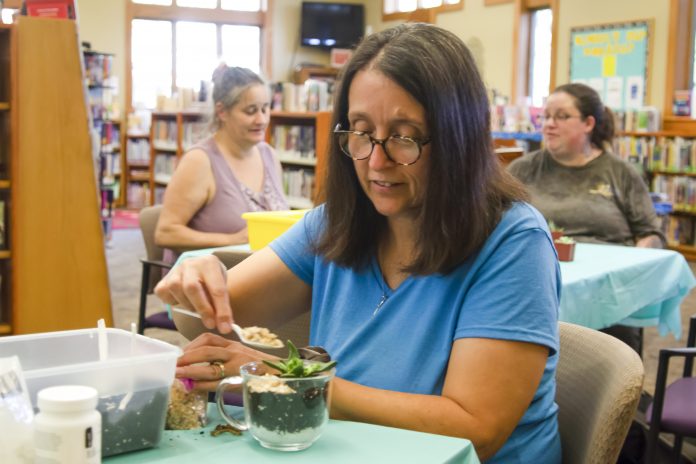Home gardeners spent Tuesday evening at the Chrisney Library tending to some new succulents for their collection. Jane Jenkins led a one-hour session offering advice on how to repot a succulent plant and have a little creative fun in the process. Through the use of clear pots, the roots and soil can be made just as eye-catching as the greenery.
While succulents, native to arid regions, are particularly hardy they are not without vulnerabilities. Their ability to retain water can work against them in an overly wet environment. Unfortunately, many planters make the mistake of treating succulents like more local flora, over-watering them and making the plant vulnerable to disease.
Most potting soils not specifically calibrated for succulents will require a little extra attention for these plants to thrive. Jenkins demonstrated how a newly-acquired succulent can be relieved of that soil and placed in a new soil environment customized for its needs and the aesthetics of its new home.
After removing some of the extra soil around one plant’s root system, she laid out a simple process for building it a new home. First, a layer course sand can be laid at the bottom of the pot before filling most of the pot with soil. That bottom layer of sand will assist with drainage, ensuring the soil does not retain too much moisture for its new tenant. After placing the plant in the soil and ensuring it has room to grow, a home gardener can then add a thin layer of gravel or pebbles.
These can be colored to match the decor of a room, but they also serve a function. While sand allows water to drain from the soil above, the top layer presses down on the soil and serves as a foundation for the base of a plant, helping keep it upright and in place.
Story and photos by Don Steen.







